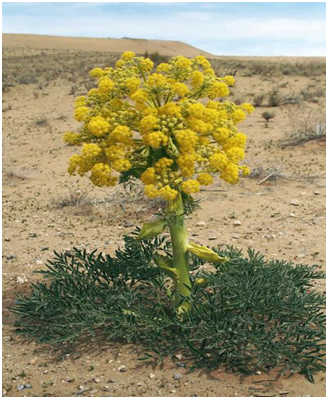Heeng Cultivation introduced in Indian Himalayas
The Council of Scientific and Industrial Research Institute of Himalayan bioresource Technology has taken up Heeng cultivation in the Lahaul valley of Himachal Pradesh. Around 750 hectares are to be covered under Heeng cultivation.
Background
The IHBT had earlier partnered with Department of Agriculture, Himachal Pradesh to boost production of Heeng and Saffron in the country. The National Bureau of Plant Genetic Resources had introduced six accessions of Heeng from Iran. Also, the institute had standardized the protocol of production according to Indian conditions.
Current Scenario
The annual demand of Saffron in India is 100 tonnes per annum. Currently, only six to seven tonnes are produced in India. A large amount of Saffron is imported from Iran. Only 2,825 hectares of land is under Saffron Cultivation in India. Saffron is mainly cultivated in Jammu and Kashmir. Now, saffron is to be introduced in Himachal Pradesh and Uttarakhand.
There is no production of Heeng in India. Heeng is currently imported from Uzbekistan, Afghanistan and Iran.
Kashmiri Saffron
The Kashmiri Saffron recently received GI tag. It was first introduced in Kashmir by the Central Asian immigrants. It is cultivated in the Karewa of Jammu and Kashmir.
The Kashmiri Saffron is the only saffron in the world that is grown at a height of 1,600 metres to 1,800 metres. The saffron has long, thick stigmas and is known for their deep red colour. There are three types of Kashmiri Saffron. They are Mongra Saffron, Laccha Saffron and Guchhi Saffron.
Heeng
It is the dried latex. It is native to the deserts of Iran and mountains of Afghanistan. The resin like gum that comes out of dried sap from roots and stem is used as heeng spice. It is greyish white in colour when fresh and turns into dark amber when dried.
Month: Current Affairs - October, 2020


